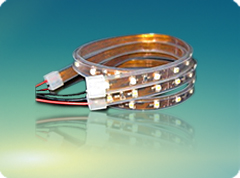For now, LED products have been widely accepted as the replacement of traditional light sources. As the semiconductor lighting technology develops, various standards about LED lighting have been published, and the certification also gradually develops. LED industry has become more and more mature, so the certification of semiconductor lighting products is also more and more important. Based on practice, this passage mainly talks about the basic knowledge about the certification of LED strip lights as well as some suggestions for enterprises which want to apply for certifications.
The classification and examples of the certification
There are mainly three classification methods of the certification. In the view of market access (the certification needed to circulate in the market according to laws and regulations), there are mandatory certifications (CCC certification) and voluntary ones (CQC and energy-saving certification). For example, the CE certification (European Union) and FCC certification (America) are mandatory certifications, and LED strip lights exported to these countries and regions must pass these two certifications first. In the view of detection requirements, there are safety + EMC certification and energy-saving certification. Please notice that the latter is about energy efficiency and the product must correspond to the safety requirements at first. In the view of applicable area, there are national certifications (CCC, CQC, and energy-saving certification) and international ones (CB, CE, and VDE certification). Following are some common examples:
(1) UL certification. American market mainly has safety requirements about LED strip lights such as UL, ETL, CSA, MET, and cTUVus certification, among which the UL certification is very common. If LED products apply for UL certification, they must pass the UL8750, which is about the application safety of LED light sources, including the requirements about the working environment, structural structure, and electric structure. The main tests of UL8750 are: electric shock test and evaluation, heat hazard test and evaluation, mechanical and electric test and evaluation, energy hazard test, fireproof materials evaluation, and working environment test and evaluation. The emphasis of CE and UL are different: the former emphasize on the electrical safety of LED strip lights while the latter pay more attention to the fireproof safety.
(2) CE certification. CE tests could be divided into two parts: the EMC (electromagnetic compatibility) tests and LVD safety tests. And the EMC tests could also be divided into EMI (electromagnetic interference) and EMS (electromagnetic susceptibility). There are various common test items of both EMC and LVD, and engineers will conduct respective tests based on your practical situation and needs.
(3) FCC certification. American market requires that the electromagnetic compatibility of LED strip lights need to pass FCC certification. Compared with the CE certification, the biggest difference is that it only requires EMI but no EMS. There are two test items: radiation emission and conducted emission, and their test frequency range and immunity requirement are also different from CE certification.
(4) Energy star certification. For LED strip lights exported to the United States, there is a most important certification besides UL (safety) and FCC (electromagnetic compatibility): the Energy Star certification. Based on UL and FCC, this certification is mainly about the optical performance, lumens maintenance as well as lifespan of LED products.
(5) Some other certifications: ROHS certification. This is about environmental protection, and only the European Union could do this. VDE certification is required by Germanic market and is mainly about components and materials. PSE certification is for Japanese market.
Suggestions for enterprises to apply for certifications
Currently, there are more and more certifications for LED strip lights, and LED manufacturers are also very active in applying for certifications. Small enterprises may have various problems during the testing of CCC and CQC. The problems especially exist in structure, external wires, waterproof as well as dustproof performance, and EMC. For now, there are about 20 manufacturers have acquired LED energy-saving certification, among which there are mostly large traditional manufacturers. These enterprises have great lighting developing foundation, which could provide great conditions for LED lighting products. From the locations of these enterprises, we could see that the Yangtze River Delta, Pearl River Delta, and Fujian province are the manufacturing base of LED strip lights. Recently, several inland areas also regard LED lighting as an emerging industry. However, because of the lack of talents and technology, LED industry does not have large scales for now. Following are some suggestions for enterprises who want to apply for certifications:
1. The enterprises should have a targeted purpose. There are various of certifications for now, and enterprises should figure out the purposes of the certification needed first. For example, the exported LED strip lights should corresponds to the certification requirements of the international market.
2. Different certifications require different technologies. Combined applications (such as CCC+ energy-saving certification, CCC+ CB) should be considerate, or you may lose one of them. Meantime, enterprises should correctly deal with the relationships between samples and products. The LED strip lights will actually circulate in the market, and enterprises should not make the samples and products different.
3. Enterprises should clearly know the quality of the sample for certification. Once failed, enterprises have to increase cost to modify it. So enterprises should better first read carefully the certification requirements, especially the parts about product range, unit classification, testing program, and quality assurance.
4. Enterprises should pay attention to the time limit of the certification for LED strip lights. In particular, the energy-saving certification costs a long time. Enterprises should reasonably plan time to avoid loss. In addition, enterprises should also clearly know the certification requirements, track the certification schedule regularly, communicate in time with the certification organization, and conduct self-monitoring through the network.





